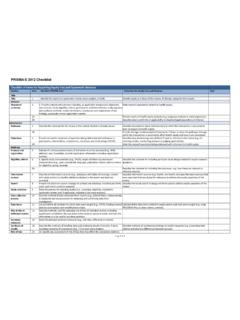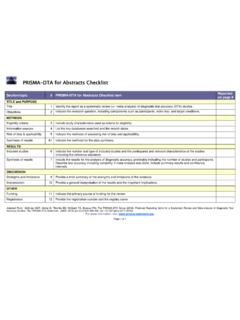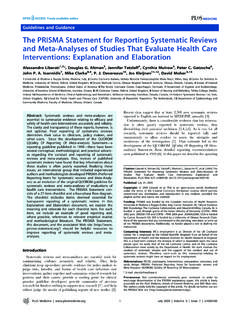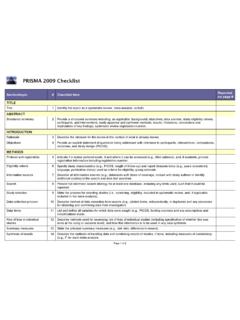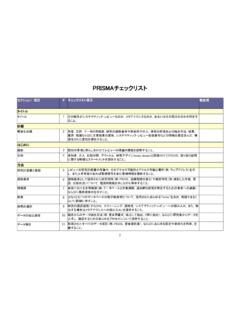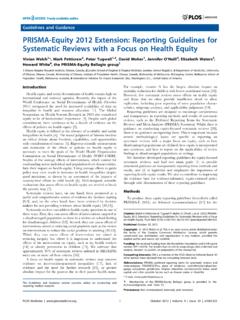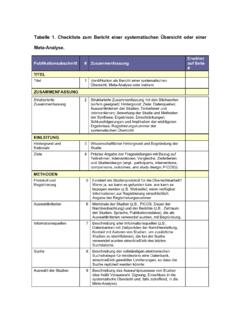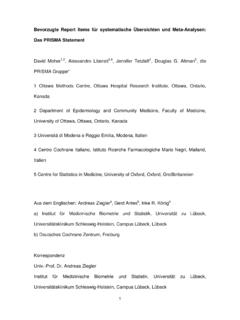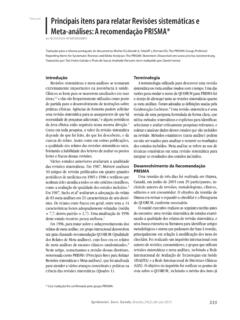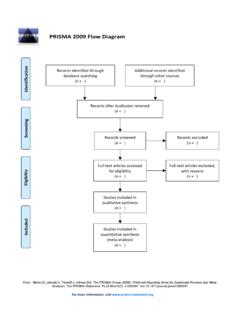Transcription of The PRISMA for Abstracts Checklist TITLE CHECKLIST ITEM ...
1 The PRISMA for Abstracts CHECKLIST TITLE CHECKLIST ITEM REPORTED. ON PAGE #. 1. TITLE : Identify the report as a systematic review, meta-analysis, or both. BACKGROUND. 2. Objectives: The research question including components such as participants, interventions, comparators, and outcomes. METHODS. 3. Eligibility criteria: Study and report characteristics used as criteria for inclusion. 4. Information sources: Key databases searched and search dates. 5. Risk of bias : Methods of assessing risk of bias . RESULTS. 6. included studies : Number and type of included studies and participants and relevant characteristics of studies .
2 7. Synthesis of results: Results for main outcomes (benefits and harms), preferably indicating the number of studies and participants for each. If meta-analysis was done, include summary measures and confidence intervals. 8. Description of the effect: Direction of the effect ( which group is favoured) and size of the effect in terms meaningful to clinicians and patients. DISCUSSION. 9. Strengths and Limitations Brief summary of strengths and limitations of evidence ( inconsistency, imprecision, indirectness, or risk of of evidence: bias , other supporting or conflicting evidence).
3 10. Interpretation: General interpretation of the results and important implications OTHER. 11. Funding: Primary source of funding for the review. 12. Registration: Registration number and registry name.
